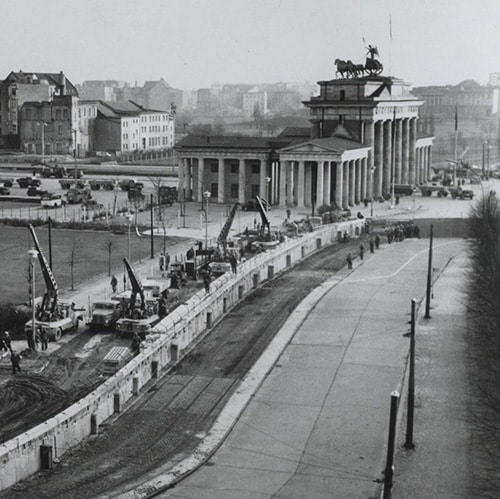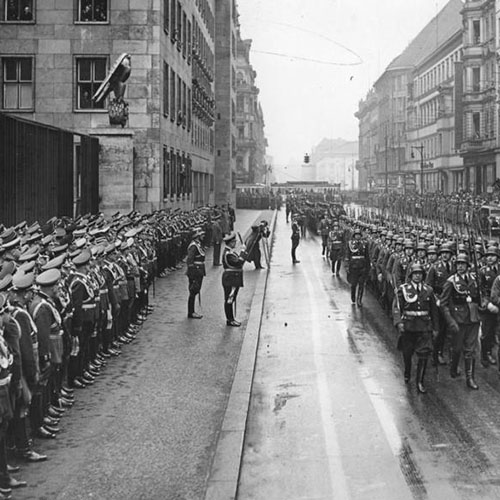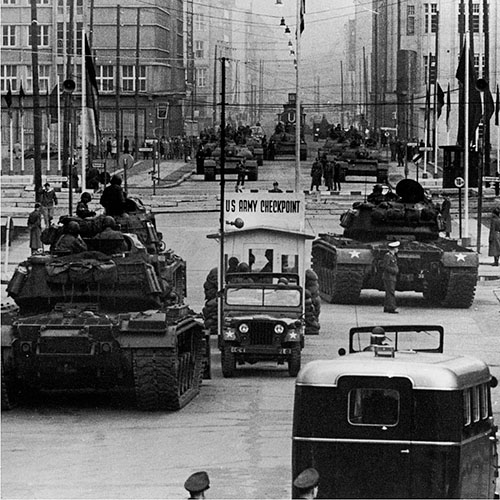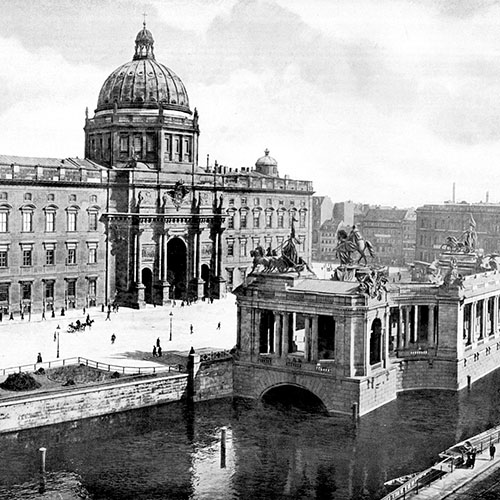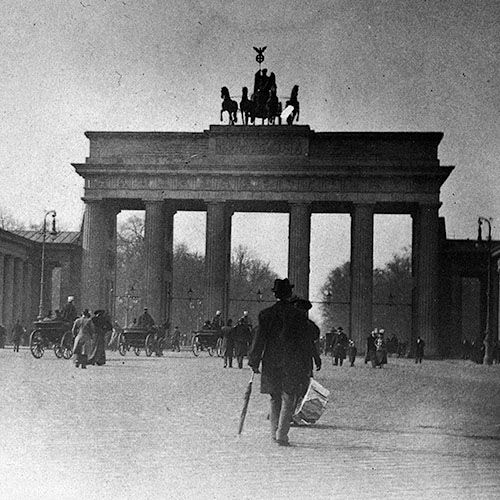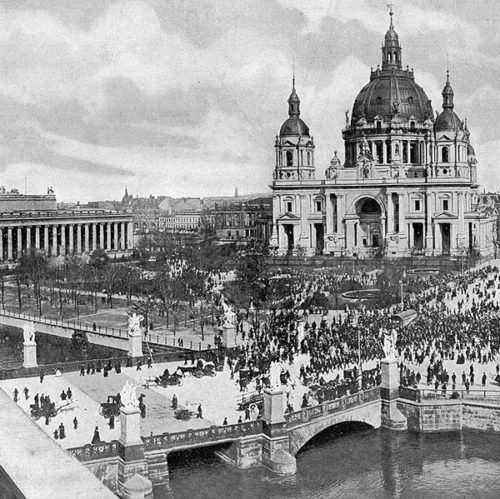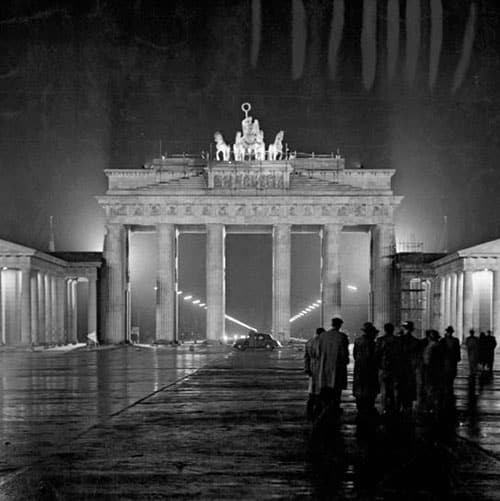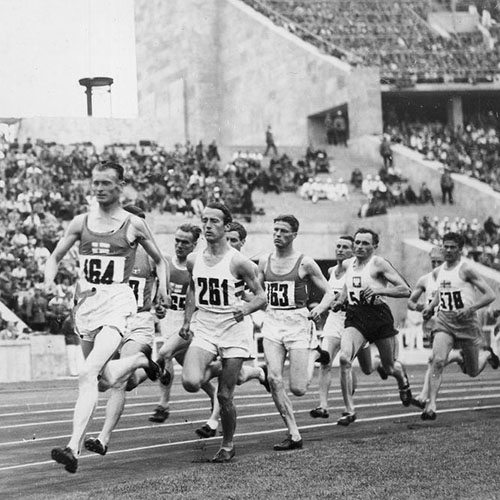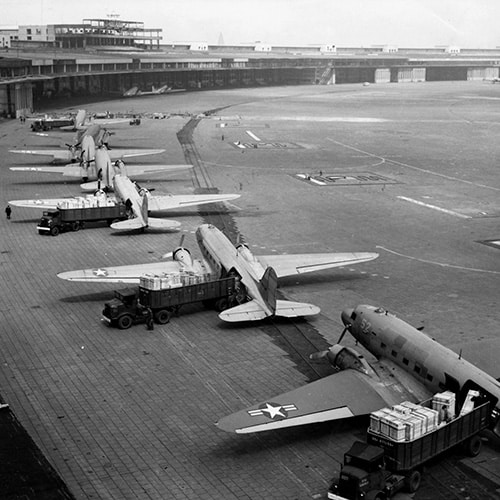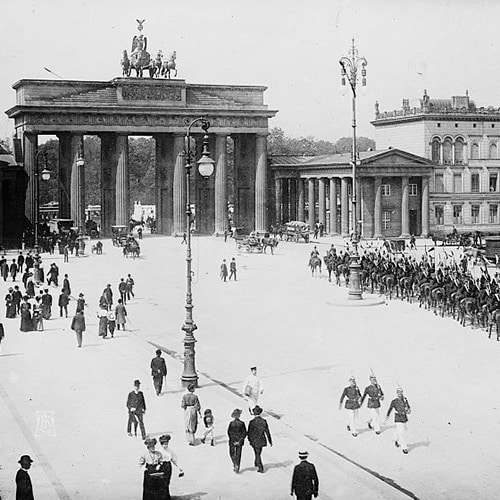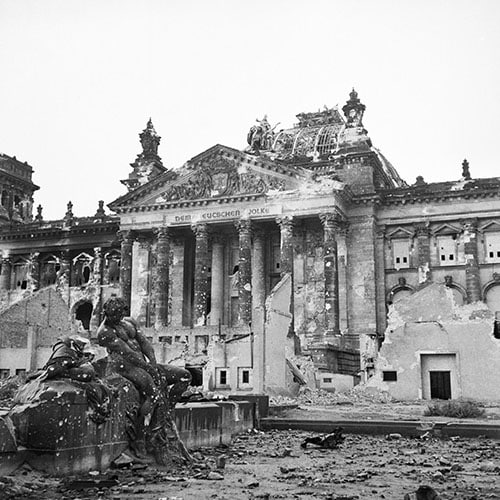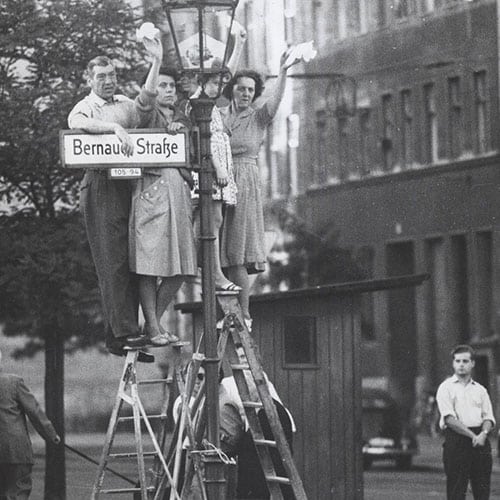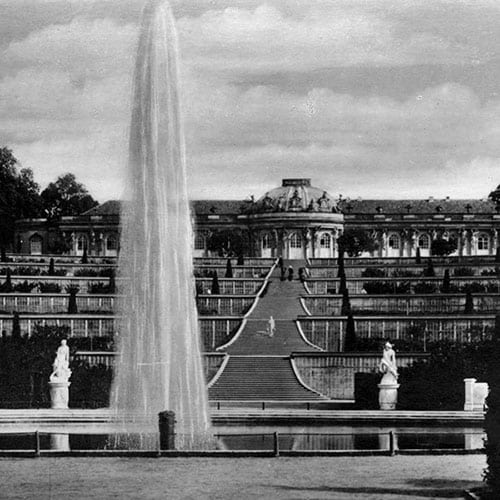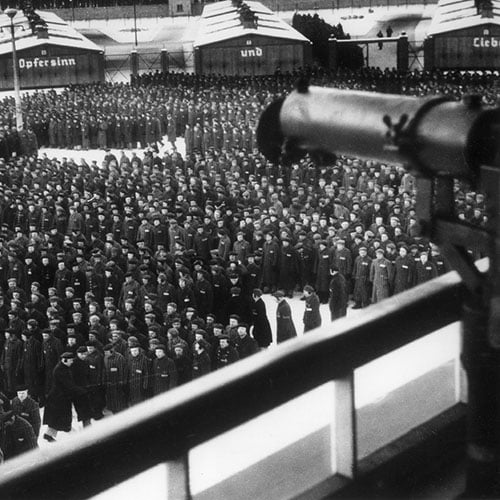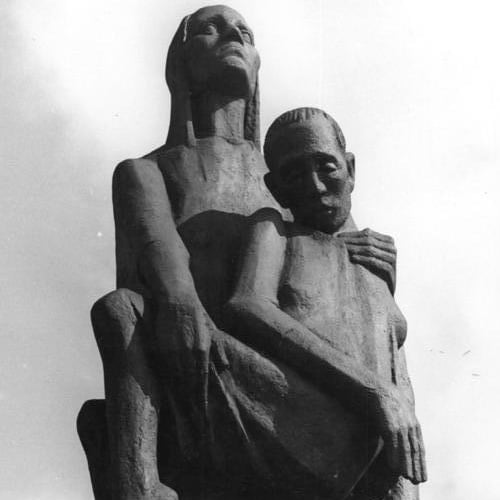“Pandemics of influenza have been recognized since earliest recorded history and, because of the mutability of the virus, still represent a formidable threat to the health of the nation.”
Paul Glezen, author of Emerging infections: pandemic influenza
As one pale rider arrived to take centre-stage in the European theatre, another seemed close to being thrown from the saddle – perhaps permanently.
While the attention of the world, in 1933, remained fixed on events in Germany – where at the start of the year, the National Socialist Party had seized power and established single-party rule – elsewhere in Europe, three British scientists managed, for the first time ever, to isolate an influenza virus.
By the early 1930s, the menace of so-called ‘Spanish Flu’ had receded – almost miraculously departing – just as the bacillus threat of Hitlerism was edging closer to its zenith.
The ability to isolate an influenza virus in 1933 meant that scientists would soon be able to provide a tailor made solution to the threat of this deadly outbreak, where previously prophylactic measures such as isolation, wearing of masks, and social distancing seemed the only methods available to limit the spread of the pandemic.
In-fact, by 1936, the same three researchers responsible for this breakthrough had managed to develop a live influenza virus vaccine – but by this time, with German remilitarisation of the Rhineland and the violation of the peace of the Treaty of Versailles, and the outbreak of the Spanish civil war dominating the headlines in Europe, concern for the lethality of what was commonly referred to as ‘Spanish flu’ had been replaced by more immediate threats.
A new political manifestation of death was stalking the European continent and threatening all-out war.
First Rome, the Berlin, now Madrid? Fascism was now spreading as rapidly as any virus – and 1936 was the year when, in Spain, it finally looked like the tide might break.
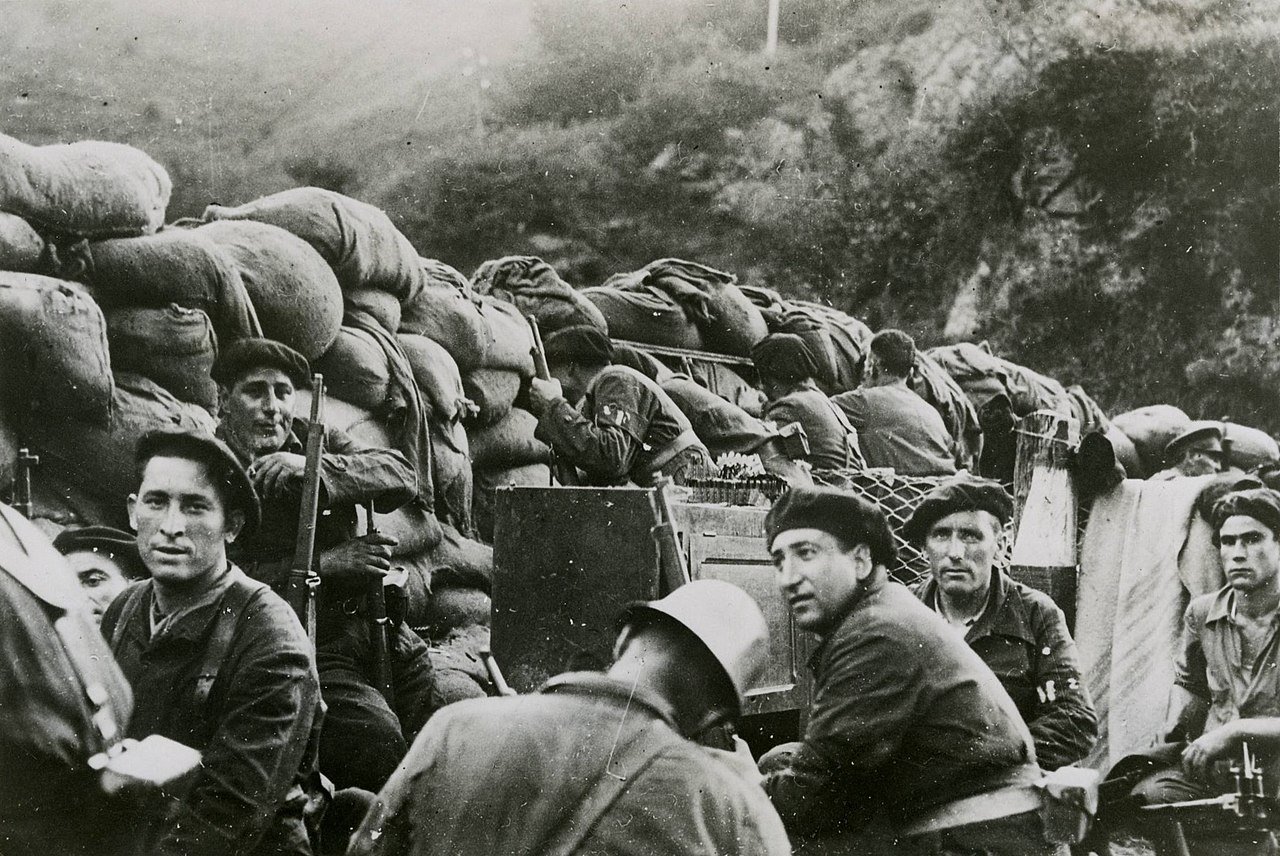
Three years in civil war in Spain would not result in the defeat of fascism, and the year of Franco’s victory would also become know as the year the Second World War began.
The path to war in 1939 was paved by fascists but the conditions that created this calamity remain open to study.
Where around 50 million people are thought to have died as a result of ‘Spanish flu’, there were around 500 million people worldwide considered to have been infected with the virus. Its effect on the people who survived this pandemic is still not well understood nor the conditions created as a result of its appearance.
Of the many factors that led to the rise of National Socialism, the fallout of the H1N1 influenza outbreak of 1918 has been eclipsed by a specific trail of events widely considered to have led to the German catastrophe of 1933. Rarely, in-fact, is its influence in this arena even considered.
The witches brew that ushered in Hitler’s regime is instead regarded as being concocted of ingredients that anyone even remotely acquainted with the history of the period will already be all too familiar with:
The failure of Imperial Germany to defeat the Western Allies in 1918, the humiliation of the Treaty of Versailles, the economic downturn of the 1920s, the deficiencies of the Weimar Republic… the list goes on.
Conspicuously absent from this Mephistophelian elixir is the presence of the most devastating influenza pandemic in recorded history.
A silent killer, which largely silenced its victims by filling lungs with fluid to the point of suffocation. Reduced to a footnote in history and overshadowed by the large scale military confrontations of the First and Second World Wars that bookmarked its appearance.
Yet the consequences of what has been dubbed ‘the forgotten pandemic’ still clearly echo into today.
–
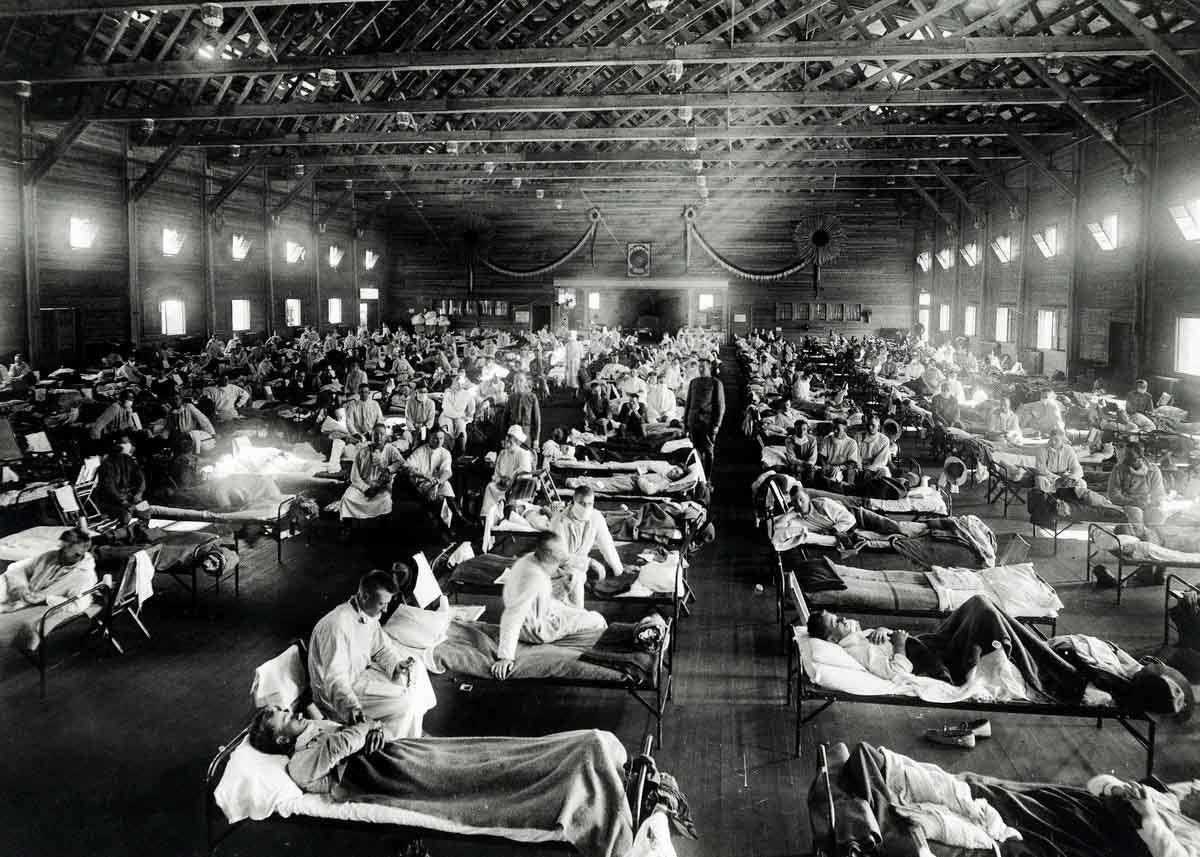
The Pale Rider Arrives
“We must also remember that the pathogenicity of the 1918 pandemic virus seems to have been inherent to an H1 HA subtype that remains in nature today. Thus, if current global population immunity to H1 viruses wanes, another H1 pandemic could arise with the same deadly consequences as those experienced in 1918.”
Jeffery K. Taubenberger, author of ‘The 1918 influenza pandemic: 100 years of questions answered and unanswered’
Influenza pandemics are not rare, but the deaths from the strain of influenza that arrived in 1918 far surpassed the number of deaths, military and civilian, from the four bloody years of conflict in the First World War.
It would claim the painter Egon Schiele amongst its victims, the sociologist Max Weber would die from it in Munich, and in New York City – where the virus is now thought to originate from – Frederick Trump, the grandfather of the future US President.
Some 675,000 people in the United States alone are thought to have died of this particularly virulent strain of H1N1; in comparison there were 535,016 (116,516 + 418,500) US civilian and military deaths from both the First and Second World Wars combined.
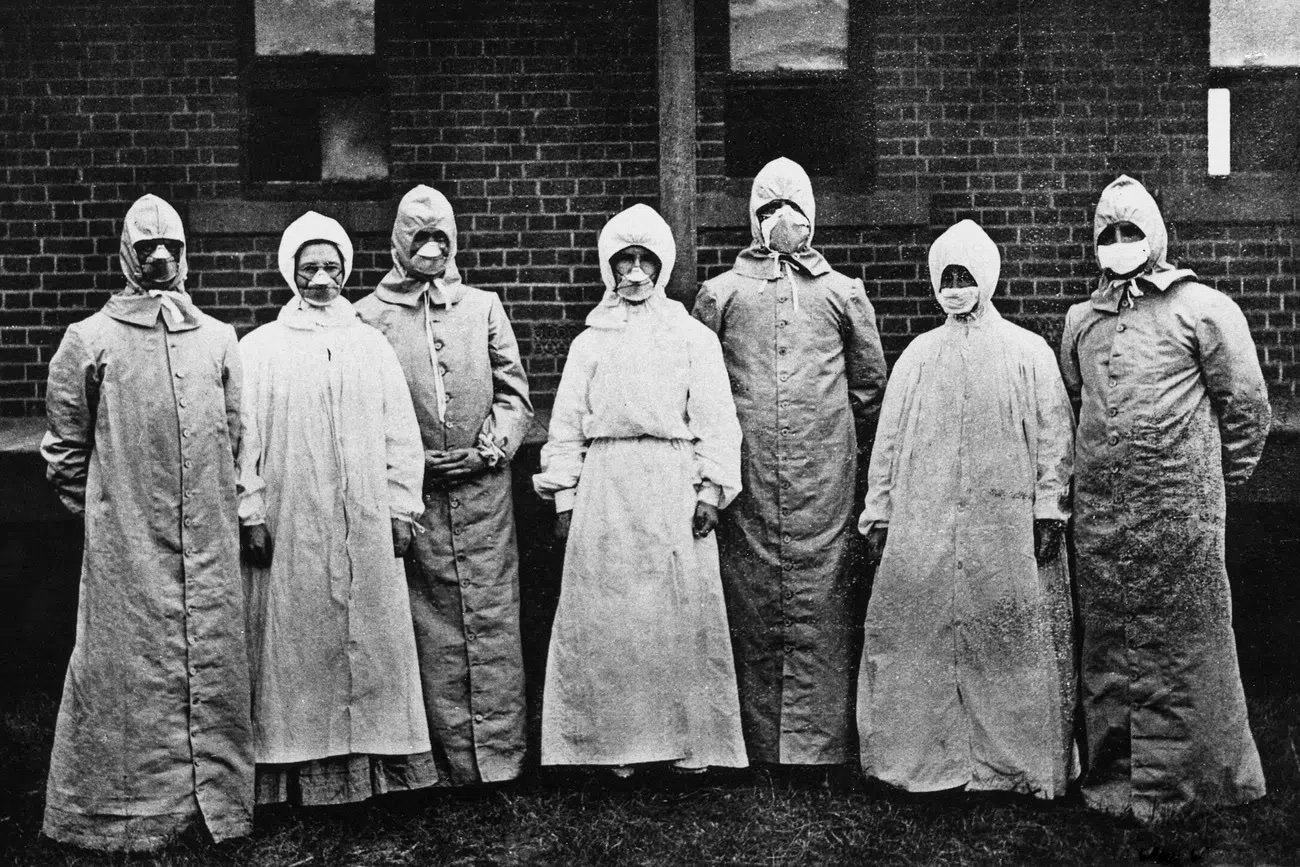
The conflict in Europe in 1918 provided the perfect conditions for the virus to spread, and as US troops arrived in Brest, France in March, the first wave of influenza broke out in the trenches the following month.
To the British it was known as Flander’s Fever, German soldiers referred to it as Blitzkatarrh, but around the world death soon had a new name – the ‘Spanish flu’.
As Spain was a neutral country during the First World War, the press were not as tight lipped with their reports on how the disease was affecting its population, and soon elsewhere in the world it would be mistakenly assumed that the virus had originated from the Iberian peninsula.
In Germany, there were an estimated 400,000 deaths from ‘Spanish flu’ between 1918 and 1920 – with more than 50,000 in Berlin alone. When considered simply as a matter of numbers on a page, it is easy to see why this should pale in comparison to the 1,773,700 German dead of mechanized bloodshed and trench warfare – but the 1918 influenza outbreak, however, was never simply about numbers. The properties that made it so devastating are still not well understood. While the Western Front finally fell silent on November 11th 1918 and with it the threat of death by bullet, shell, or bayonet receded; the menace of ‘Spanish Flu’ hung over the planet like a funeral shroud long after it had been brought under control. With no vaccine to protect against influenza infection and no antibiotics to treat secondary bacterial infections. Most of the deaths were not in-fact from the virus directly, but from secondary bacterial pneumonia.
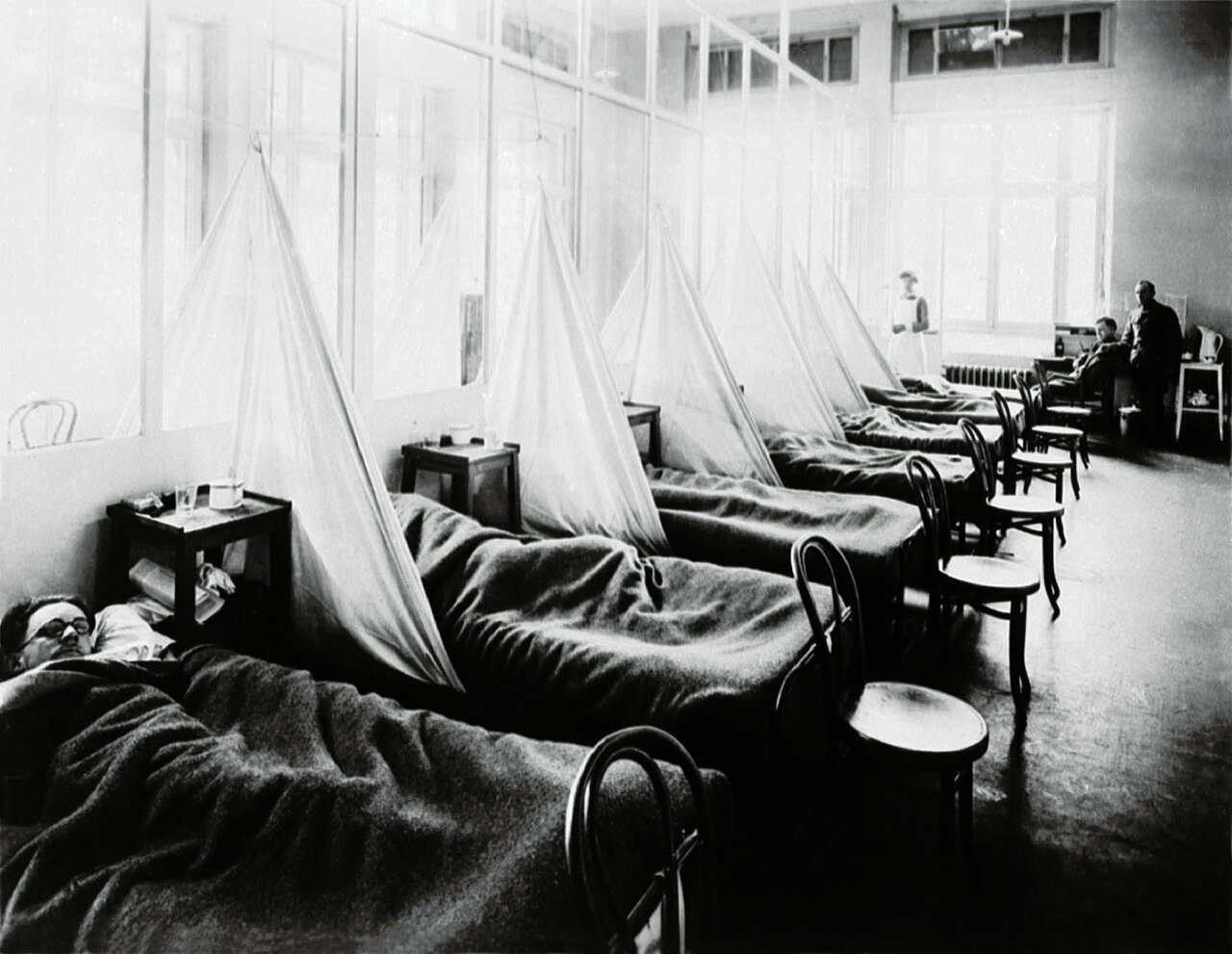
Doctors at a loss to deal with the pandemic had prescribed whatever they could, to no avail – arsenic, morphine, heroin or mercury. Some tried bloodletting. Many administered fatally high doses of aspirin. Science could provide no immediate solution other than quarantine measures.
The outbreak of ‘Spanish Flu’ would give the world the sense of constant fear of an invisible enemy; the sense of being constantly pursued with nowhere to hide and no cure but chance. The etymology of the word ‘Pandemic’ makes the case for its universalism – Pan Demos – from the Greek, meaning ‘all people’.
To the dead, the effects of this pandemic were coffin clear, those however who happened to survive had to live with a catalogue of after-effects.
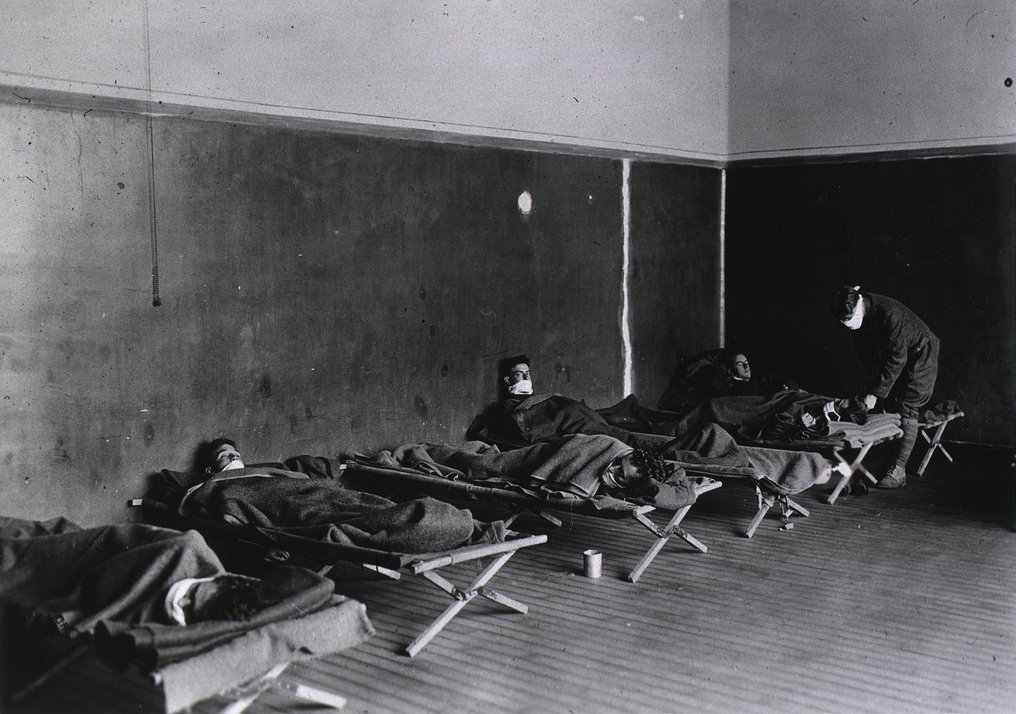
Researchers in 2018 published a study of the long term effects of ‘Spanish flu’ after the virus genome had been recreated from the lung tissue of a victim recovered from Alaskan permafrost.
The results found that unlike with the ordinary flu, this strain directly infected the brains of laboratory ferrets – striking the olfactory bulb, disrupting wake-sleep cycles and inducing symptoms similar to those of Parkinson’s disease.
William Olser, one of the four founding professors of Johns Hopkins Hospital, regarded as one of the greatest physicians in the history of medicine, would write: “almost every form of disease of the nervous system may follow influenza” before himself succumbing to ‘Spanish flu’ in 1919.
–
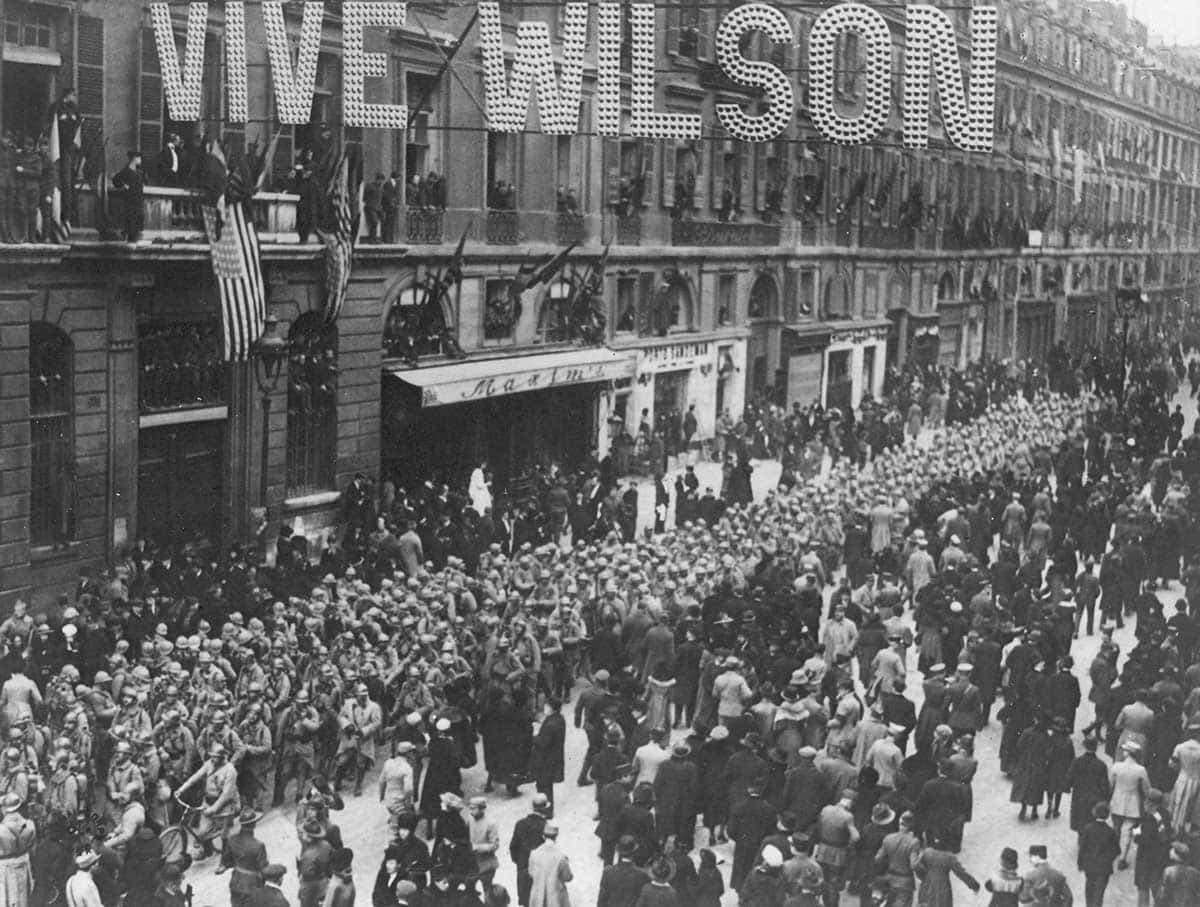
The Faded President & The Treaty Of Versailles
“Anglers have a way of romanticizing their battles with fish and of forgetting that the fish has a hook in his mouth, his gullet, or his belly and that his gameness is really an extreme of panic in which he runs, leaps, and pulls to get away until he dies. It would seem to be enough advantage to the angler that the fish has the hook in his mouth rather than the angler.”
Ernest Hemingway
The outbreak of influenza in 1918 struck all the armies involved in the First World War without discrimination and might have claimed more than 100,000 fatalities among soldiers overall while rendering millions unable to fight.
Around 900,000 German soldiers are thought to have been incapacitated at the time of the final German offensive in 1918. General Erich Ludendorff would conveniently blame the failure of this attack on the ‘Spanish flu’ – although the truth was clear to all that the war was already unwinnable and the offensive was doomed to fail.
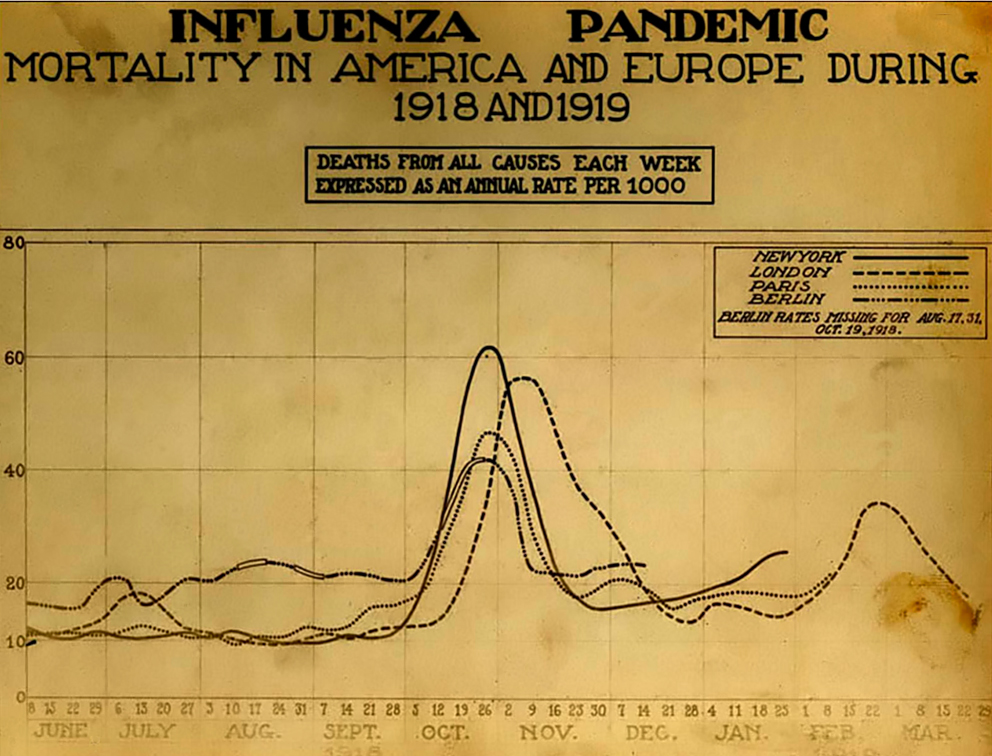
With the German Empire disintegrating, peace talks were set to revolve around the Fourteen Points outlined by US President Woodrow Wilson and accepted by Germany as the basis for negotiations. Wilson called for open diplomacy, free trade, and a body to oversee international cooperation and prevent future wars.
His points seen as a disavowal of malice towards Germany; a moderated solution to the problems of the ‘Old World’ that could ensure a lasting and just peace.
Wilson’s attempts to establish a durable peace would be stifled in particular by French opposition – demanding that Germany be held responsible for European calamity and suitably punished.
Between the signing of the Armistice of November 11th 1918, that ended fighting on land, sea and air in the First World War and the conclusion of the Paris Peace Conference, where the peace terms for the Central European powers were dictated, something disturbed the US President.
He became terribly ill.
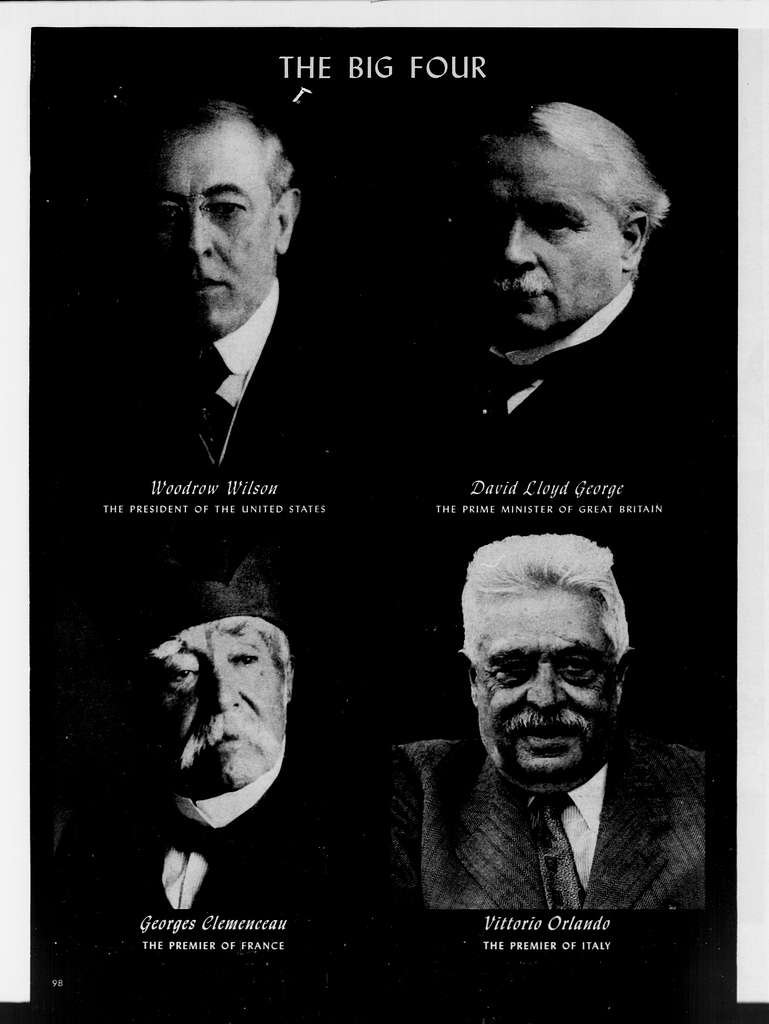
Struck down in March 1919 with flu-like symptoms that would be downplayed by his physician, who prescribed bed rest as the cure.
To the press, the doctor explained that the President merely had a cold, but the vomiting, diarrhea, asthmatic coughing and high fever that overcame him were certainly an manifestation of the pandemic flu virus of 1918.
Electing to leave his best advisors at home, Wilson had travelled to Paris to represent the United States in what essentially amounted to a one-man show. He would even do his own typing.
Winston Churchill would say of Wilson’s role in the First World War that, “he played a part in the fate of nations incomparably more direct and personal than any other man.”
Certainly of the Big Four at the Paris Conference – David Lloyd George of Britain, Vittorio Emanuele Orlando of Italy, Georges Clemenceau of France, and Wilson – his was the voice of moderation. Contrary to the French and British, Wilson did not believe that responsibility for the war, placed on Germany alone, was fair or warranted.
Plagued by medical issues his entire life – well before the stroke that would cripple the last part of his presidency – his behaviour from March 1919 at the Paris Conference has puzzled many historians, who see the resulting Treaty of Versailles as a product not only of the draconian demands of the French but Wilson’s inability to hold tight to his vision of a just peace.

The US President had in-fact been suffering from a heavy head cold and sore throat since he boarded the troopship George Washington to head to Paris on December 4th 1918 – but in his final two months in Paris, Wilson would be overwhelmed with paranoia and heart problems, convinced that the cleaning staff and waiters were spying on him.
“Coming from the President,” Ike Hoover, Chief Usher to the President, later commented, “these were funny things, and we could not but surmise that something queer was happening in his mind.”
Was this a man suffering from the residual effects of a recent bout of ‘Spanish Flu’?
Whatever the measure of Wilson’s health, the outcome of the Paris Peace Conference was clear, before the symptoms of his condition worsened the US President managed to ensure the creation of the first globally encompassing international organization in history – the League of Nations – as per the final of his Fourteen Points. Fittingly, one of its founding purposes was to help fight pandemic diseases such as the Influenza and later the typhus which was widespread in Europe after the war.

On the matter of Wilson’s pleas to treat Germany with leniency, else risk creating the conditions for a future conflict, it is concerning that the timing of the agreement of punitive reparation measures against Germany coincided with the height of his sickness.
His subsequent state, and the success of establishing the League of Nations in hand, Wilson must have considered this a win under the circumstances.
That the United States would then fail to join the League of Nations – since unanimously agreed to have fatally damaged the credibility of the organisation and led to its demise – was not something that Wilson foresaw.
That the Treaty of Versailles would foment the rise of extremism, thus creating the conditions for a further war while simultaneously leading to a policy of appeasement against German military expansionism was not far from his mind.
Whatever state that mind was in.
–
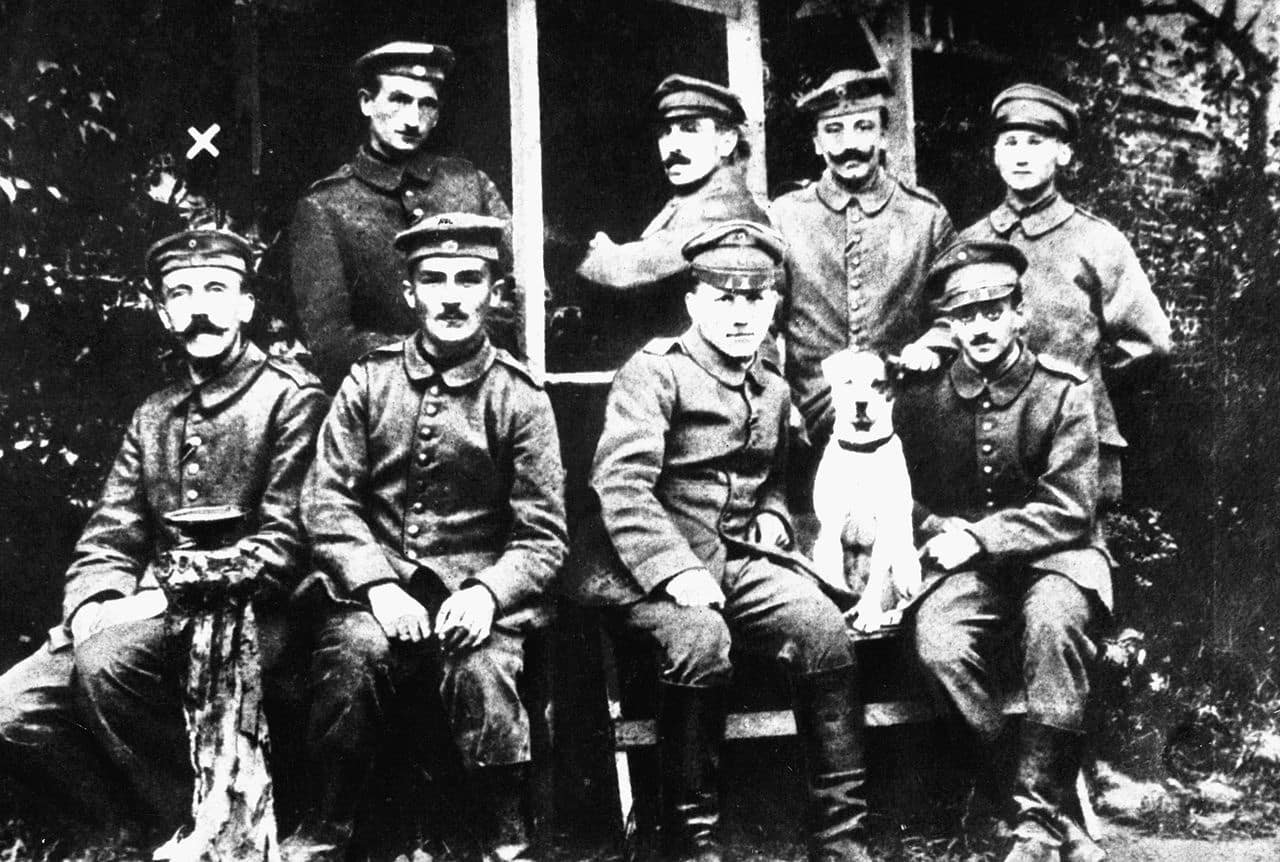
Adolf Hitler & The Eye Of The Storm
“We no longer fought for Hitler, or for National Socialism, or for the Third Reich,’ wrote an Alsatian veteran of the Grossdeutschland Division, ‘or even for our fiancées or mothers or families trapped in bomb-ravaged towns. We fought from simple fear… We fought like rats.”
Antony Beevor
Had Woodrow Wilson been more forceful in his argumentation at the 1919 conference – were he not so sick – it is possible that a less punitive peace more in the spirit of his Fourteen Points could have been agreed.
Thus saving Germany the humiliation and economic burden of the Treaty of Versailles and denying the future Nazi Party a fundamental part of its platform.
The so-called ‘Carthegenian peace’, famously described by British economist John Maynard Keynes, that followed undoubtedly laid the groundwork for the rise in support the National Socialist Party saw in the 1920s and 30s, with the ‘disgrace’ of the Treaty of Versailles being a recurring theme in Adolf Hitler’s Mein Kampf.
Although public health does make an appearance in Adolf Hitler’s pseudo-biographical call-to-arms, it is the spread of syphilis rather than influenza that Hitler is fixated with – albeit he would frequently resort to the language of virology in his anti-semitic tirades.
How much the outbreak of Spanish flu in 1918 affected Hitler personally is still unclear.
He often claimed that his years as a soldier in the First World War were the most formative years of his life, having served for forty-two of the fifty-one months of the war and survived the First Battle of Ypres and the Battle of the Somme.
![Hitler at a mass rally in front of the Feldherrenhalle [Field Marshals' Hall] in Munich on August 2, 1914.](https://berlinexperiences.com/wp-content/uploads/2021/06/berlinexperiences_mythbustingberlin_spanishflu_4b-1-scaled.jpg)
At the time the influenza outbreak of 1918 reached the Western Front, Hitler’s regiment was based near the French medieval town of Montdidier in Picardy.
As the regiment was moved to set up a new line of defence on the Aisne River close to Soissons, it found itself not only fighting the French forces but also the spread of ‘Spanish flu’, with Hitler’s brothers-in-arms stuck shivering in trenches and unsure of what to make of the mysterious pandemic. After participating in the disastrous all-or-nothing Spring Offensive (the Second Battle of the Marne), Hitler returned to Germany for a signals training course in Nuremberg before reappearing at the front only to fall victim to a British gas attack in October 1918, for which he would be transferred to a hospital in Pasewalk for the remainder of the war.
Placed in the hospital’s psychiatric ward, Hitler was diagnosed with ‘war hysteria’.
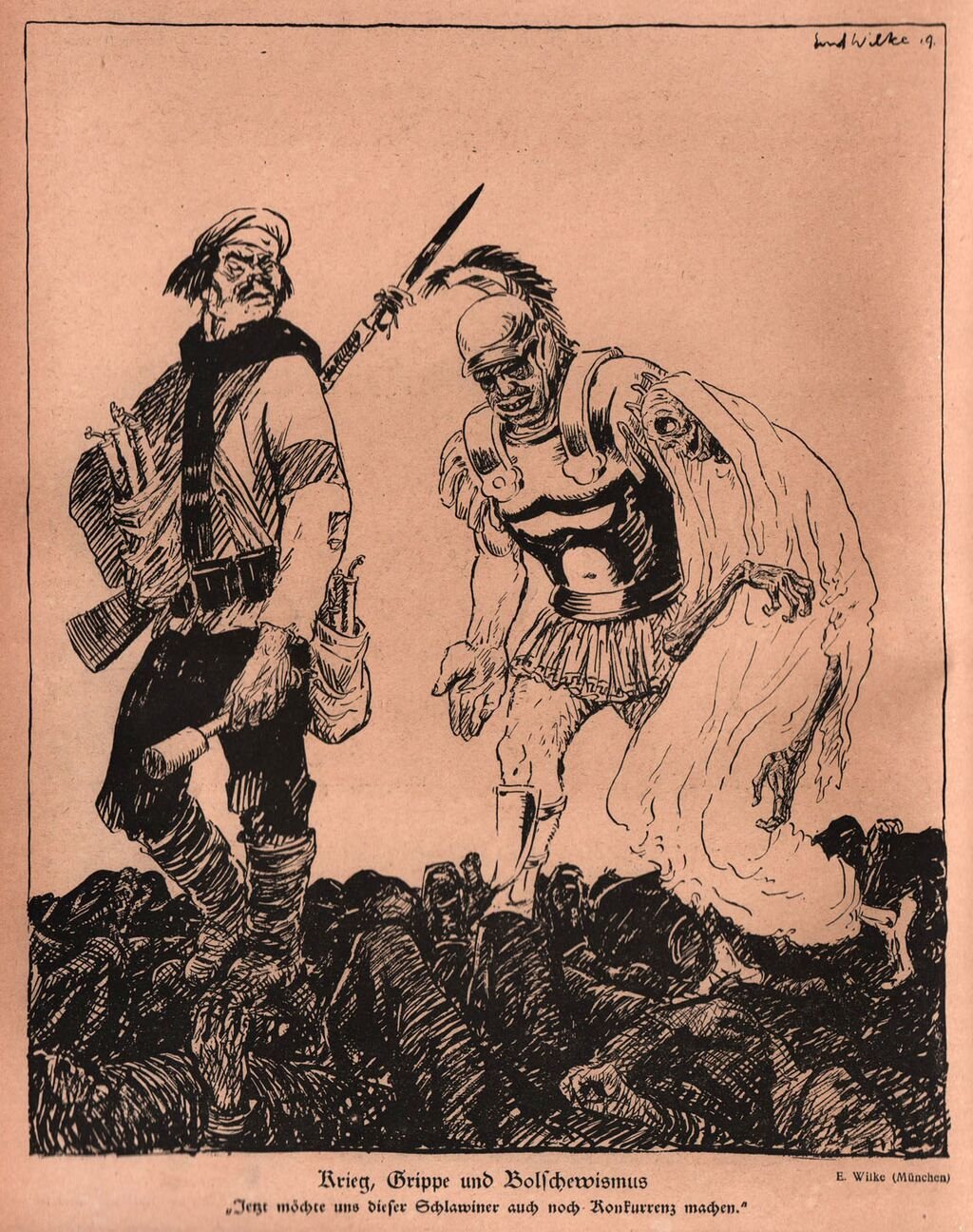
Back in Berlin, the first wave of influenza had struck the city in mid-June 1918, while the weather was rainy and the temperature was mild – an explanation according to the newspapers at the time for the spread of the pathogen. In August, the second wave would more severely affect the German capital. Eventually the city council would acknowledge the pandemic on October 24th, with little initiative shown in dealing with it. The authorities at that time estimated that two thirds of people in the city were sick with influenza but with the German Empire gradually disintegrating government officials could not agree on a course of action.
As Hitler lay recuperating in Pasewalk, the second wave was reaching its height – october 1918 was the month with the highest fatality rate of the whole pandemic.
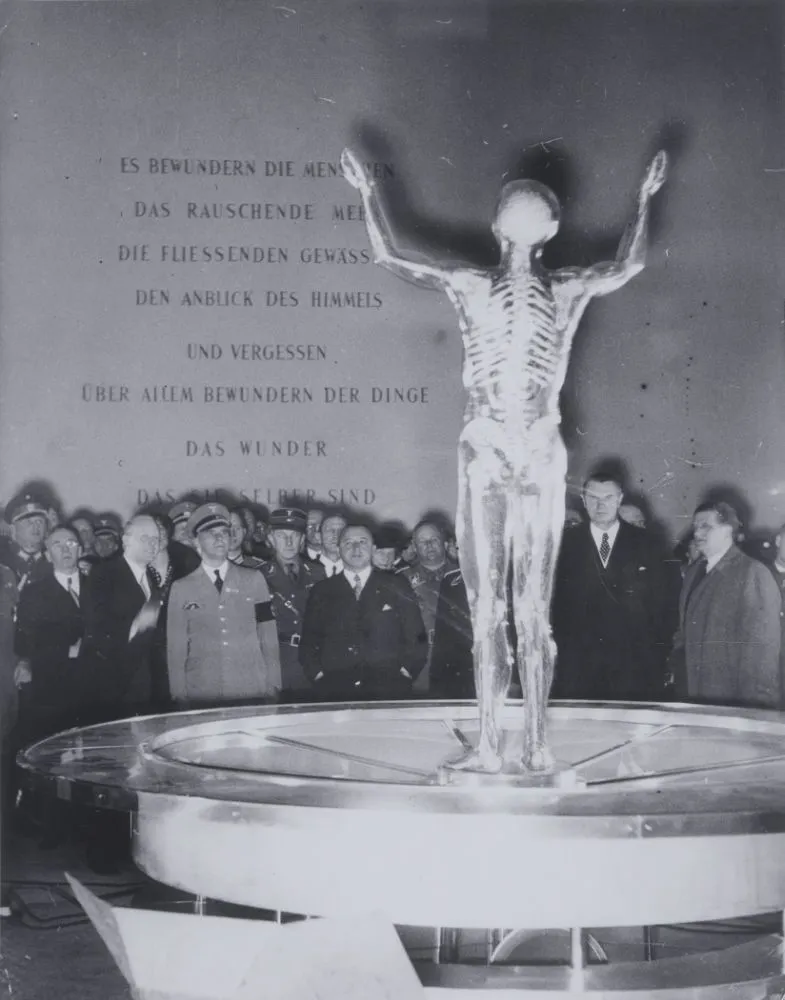
While the outbreak of influenza in 1918 seems to have not directly concerned Hitler – there is no mention of it in his critical account of the last year of the war in Mein Kampf – he would have been more than aware of the significance of this modern plague.
The language of early 20th century anti-semitism – the second core value of the Nazi Party alongside refusal of Treaty of Versailles – was essentially a vociferous reappropriation of the terminology of the physician.
Take this example from chapter 10 of the first part of Mein Kampf (Cause of the Collapse), where Hitler states: “It was no accident that man mastered the plague more easily than tuberculosis. The one comes in terrible waves of death that shake humanity to the foundations, the other slowly and stealthily; the one leads to terrible fear, the other to gradual indifference. The consequence is that man opposed the one with all the ruthlessness of his energy, while he tries to control consumption by feeble means. Thus he mastered the plague while tuberculosis masters him. Exactly the same is true of diseases of national bodies.”
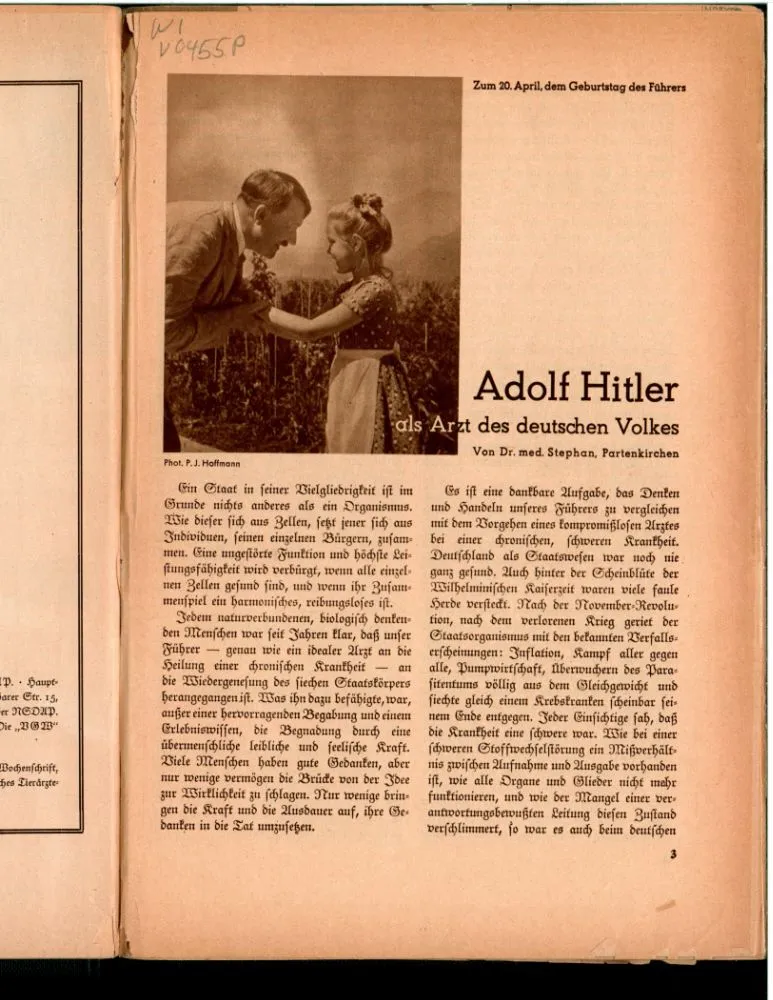
Death by disease had been a constant in Europe for thousands of years, but the Spanish Flu was the most contemporary example in the 1920 and 30s and even when not addressed directly would have likely been at the forefront of the minds of anyone of the generation – including Hitler.
The collective memory of its lethality infecting the mind in a way that the virus itself was incapable of doing.
–
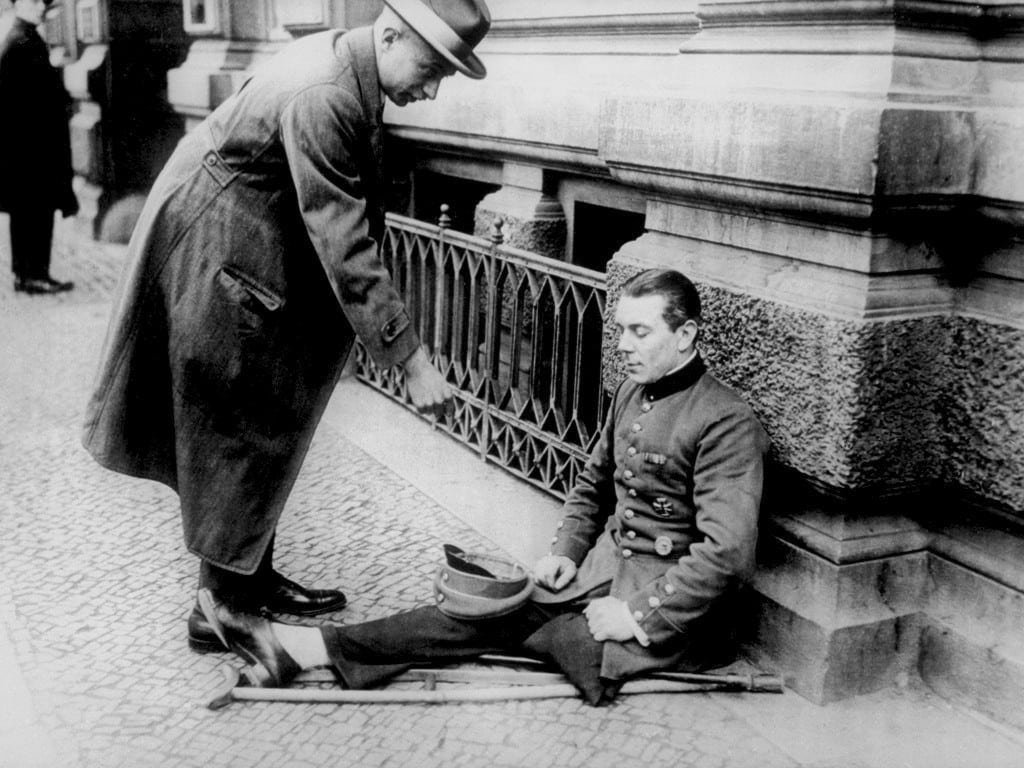
The Economic Fallout & Demographic Shift In Germany
“The urban population is currently even more affected by the virulent flu than by the great defeats.”
Heidelberg medievalist Karl Hampe, October 1918
In May 2020, the Federal Bank of New York published a study claiming that the reaction from the German political system to the Spanish Flu outbreak directly sowed the seeds of political extremism in the country, with “a strong effect on the share of votes won by extremists, specifically the National Socialist Party,” in the important elections of 1932 and 1933.
Titled ‘Pandemics Change Cities: Municipal Spending and Voter Extremism in Germany, 1918-1933’, the study is authored by economist Kristian Bickle and concludes that pandemics such as the 1918 Spanish Flu affect the provision of public goods and may be correlated with extremist voting; an effect that may be exacerbated by pre-existing anti-minority sentiments, or disease-focused propaganda.
Analysing the data provided by the Statistisches Jahrbuch für das Deutsche Reich (the Annual Statistics for the German Reich) it is possible to confirm that in Germany the particular strain of virus that spread in 1918 largely affected younger people, as in other countries.
Thus further compounding the demographic effects of the war – where many of the German soldiers who died were young (at least in the initial fighting).
The German Statistical Office published death figures in 1918 showed that the mortality rate from the flu in Berlin was more than double that of the previous year.
The important claim in Blickle’s work regarding the financial consequences of the spread of the virus and government intervention is that areas where the pandemic had a higher death toll also saw lower public spending per capita in the decade following the outbreak, which in turn is seen to have contributed to extremist voting.
The bottom line being that financial austerity leads to political extremism.
It is documented that the second wave of influenza, in particular, also led to economic problems in rural areas of Germany due to a shortage of workers for the harvest.
Dr. Stefan Müller of the Friedrich Ebert Stiftung also notes that: “Although the Spanish flu did not determine political action in 1918, it did find its way into the deliberations and analyses of the Council of People’s Representatives due to the poor living conditions that were exacerbated by the pandemic.”
At a time when Germany most needed stability, in the face of the disastrous end of the First World War, it was undergoing a period of political upheaval with social conditions – already heavily burdened by four years of a foolish war – exacerbated by the presence of a pandemic that not only were medical professionals incapable of stopping.
They were also struggling to identify.

The publication of New York Federal Reserve’s abovementioned study could not have been more timely, as in March 2020 the world was coming to terms with the arrival of a new pandemic. This time originating in China.
The ‘Spanish flu’ term, popularly used to describe the 1918 influenza outbreak is still in circulation – albeit you will struggle to find it used seriously in any respected scientific journal – national attribution of the 2020 Covid-19 virus has been widely shunned.
A brief period where the virus was referred to as the ‘Chinese virus’ was met with an outcry of racism and claims that such a term would promote anti-asian sentiment in the western world. The ‘Chinese virus’ was subsequently dropped. Although the terms ‘UK variant’ – ‘South African variant’ – and ‘Brazilian variant’ – were in the spring of 2021 merrily bandied around.
One can only wonder what the lasting after-effects from 1920 would have been had Germany been deemed responsible for the international outbreak of influenza – as the New York Times had suggested was the case at the time.
The term has stuck in regards to Spain, and there remains no evidence that the virus originated there.
There seems no doubt, however, that the 2020 pandemic started in China.
**
Conclusion
Germany in 1918 was a nation in crisis: four years of war, hunger, and hardship had left the population severely weakened, just as a deadly influenza swept across Europe.
This dual catastrophe devastated families and communities, deepening public despair and social instability in the early Weimar Republic.
The arrival of the so-called ‘Spanish Flu’ in 1918 at the very least can be said to have coincided with a period of extremely political, economic, and social instability in Germany.
The effects of this pandemic reverberated through a German society that would become increasingly fragmented – before being forcibly unified around the National Socialist Party following its seizure of power in 1933.
The pandemic’s demographic toll and social disruption coincided with a surge of political extremism in these vulnerable postwar years. Recent research suggests that German communities hit hardest by the flu suffered lasting economic strain – for example, many spent less on public services in the 1920s – and later showed higher support for radical parties. In fact, areas with especially high 1918 flu mortality tended to give more votes to right-wing extremists (including the Nazi Party) in the early 1930s.
While this correlation does not mean the virus directly caused Nazism, it indicates that the pandemic exacerbated local grievances.
By undermining public health and welfare, the flu pandemic helped create an atmosphere of desperation that extremists could exploit.
In historical research beyond medical history, influenza has so far received little attention. But the swamp from which the Nazis rose in the 1920s and 30s was one defined by the presence of certain publicly denounced maladies.
Because the Spanish flu primarily affected middle-aged people (20 to 40) and tended to spare children and the elderly, it contributed to the aging of German society, had a negative impact on production during the Weimar Republic, and promoted domestic conservatism.
The attendence of this strain of influenza at the negotiating table in Paris, 1919, likely led to the more exacting punishment of Germany – deemed chief perpetrator – due to Woodrow Wilson’s depleted presence.
That the punitive Treaty of Versailles would serve as a rallying cry for those eventually drawn to the Nazi Party’s denouncement of an ‘unjust peace’ is an opinion shared by historians throughout the world. Espoused publicly by the Nazis themselves.
Ultimately, the 1918 influenza pandemic was one factor among many in Germany’s collapse and radicalization after World War I. It struck an already fragile society, aggravating the economic misery and public discontent of the era. However, other forces – particularly Germany’s own imperial ambitions and militarist legacy, the shock of defeat in 1918, and the calamity of the Great Depression – played far more direct roles in the Nazi Party’s ascendancy. Historians generally agree that the Nazis rose to power due to multiple structural causes, especially the devastation of World War I and widespread frustration with the postwar Weimar government.
In fact, the collapse of the economy in the early 1930s is seen as the indispensable condition for Hitler’s success.
The Spanish Flu did not cause the Nazis to take power in Germany – correlation is not causation – but it undeniably shaped the troubled environment in which that power grab became possible.
By worsening Germany’s demographic and social stability at a critical moment, the pandemic contributed to the broader instability that made extremist solutions more appealing, indirectly helping to set the stage for the Nazi rise in a devastated nation.
***
If you’ve enjoyed reading this article, consider booking one of our private guided tours of Berlin.
HISTORICAL ARTICLES
Mythbusting Berlin
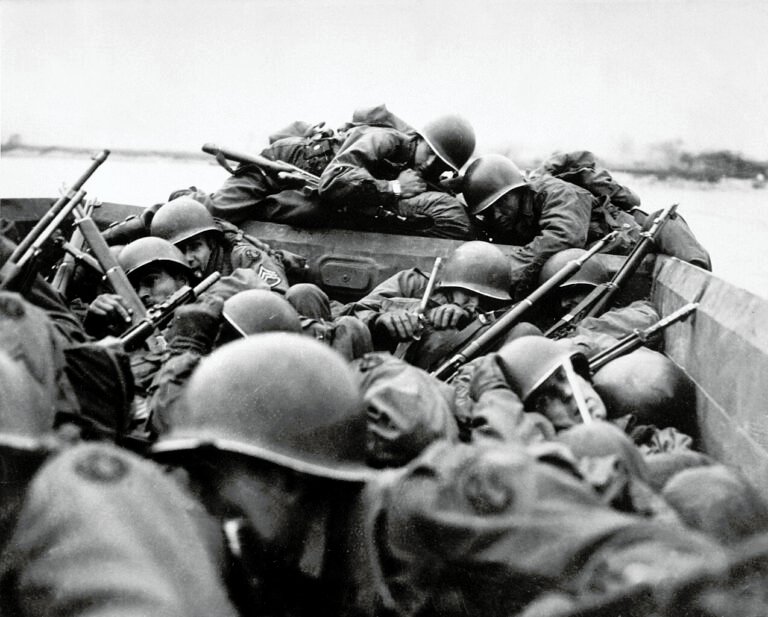
Could The Western Allies Have Captured Berlin? – Mythbusting Berlin
To contemplate a Western Allied capture of Berlin in 1945 is to challenge the established endgame of the Second World War. What was the true military and logistical feasibility of a Western Allied assault on the Nazi capital? What factors truly sealed Berlin’s fate, and what might have changed had the Allies pushed eastward?
Answering these questions means delving into the complex interplay of logistics, political maneuvering, and the competing visions for a post-war world
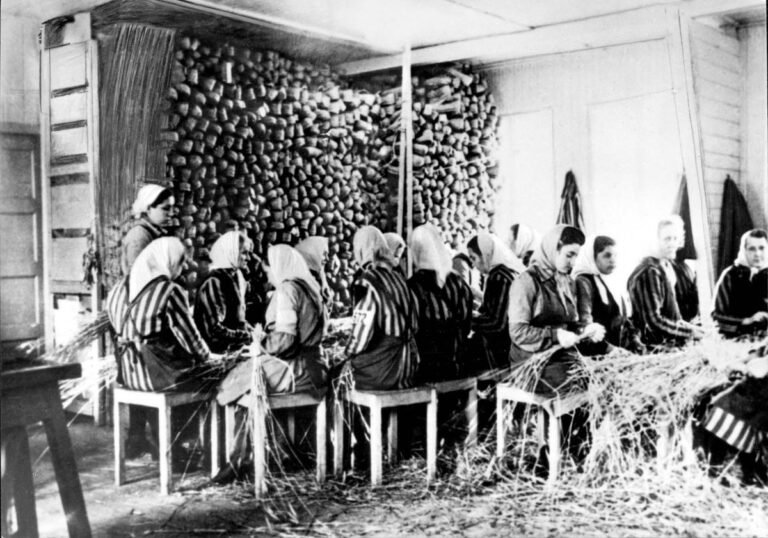
Did Any Of The Rothschild Dynasty Die In The Holocaust? – Mythbusting Berlin
The Rothschild name is synonymous with immense wealth, influence, and persistent conspiracy theories—especially during the era of Nazi Germany. Often targeted by antisemitic propaganda, the family’s survival during World War II has sparked myths about their supposed immunity from Nazi persecution. But did any Rothschild family member actually perish in the Holocaust? This article explores that compelling question, unraveling historical misconceptions and revealing the reality behind one of Europe’s most famous dynasties.
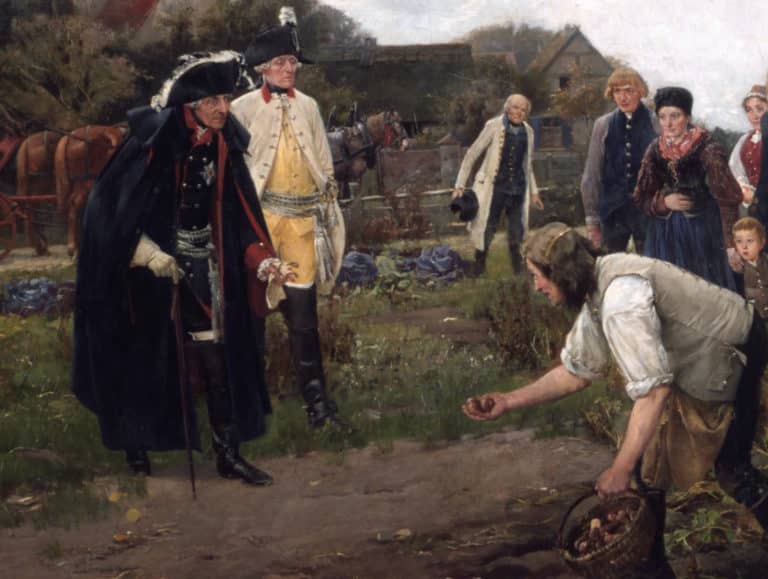
Did Frederick The Great Introduce The Potato To Germany? – Mythbusting Berlin
One of the more bizarre claims to fame attributed to the first King of Prussia is that the man who would go down in history known as Frederick the Great introduced the potato to Germany during his reign back in the 1700s. This starchy root vegetable has undoubtedly become a staple part of German cuisine – an essential addition to any plate of Schnitzel, Schweinshaxn, and Königsberger Klopse – however, whether Frederick the Great is
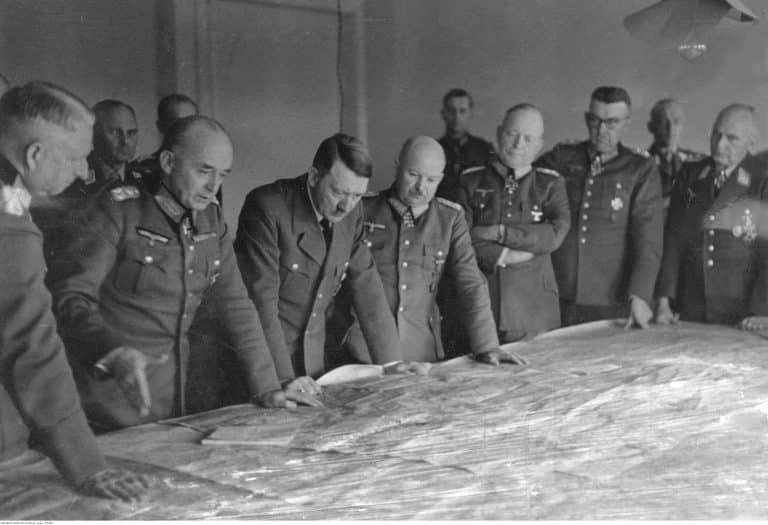
Did Hitler Escape To Argentina In 1945? – Mythbusting Berlin
Although Nazi leader, Adolf Hitler, certainly remains an inescapable figure, could there be any truth to the story of his escape to Argentina in 1945? That the most wanted man on earth could simply vanish, to spend the rest of his life peacefully in South American obscurity captivates imaginations. Yet, despite numerous investigations, this tale persists primarily as myth—fueled by speculation, hearsay, and conspiracy theories.
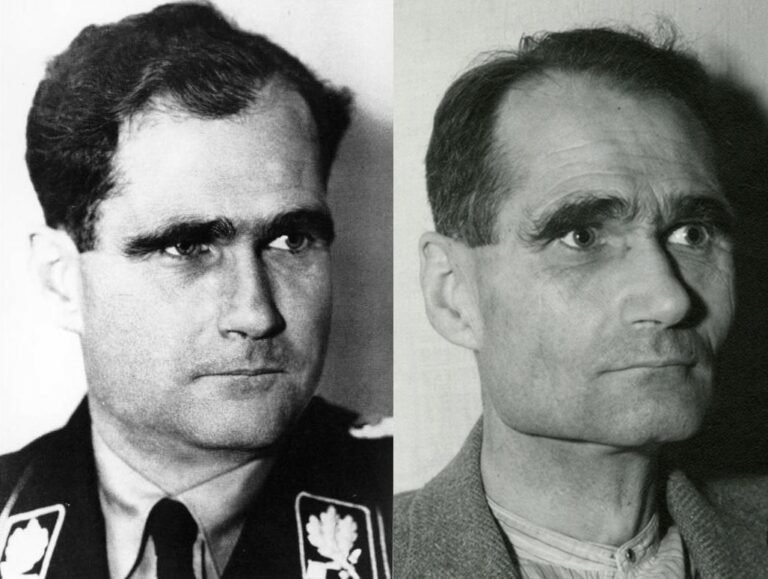
Did Rudolf Hess Really Commit Suicide? – Mythbusting Berlin
On a summer’s day in 1987, the last Nazi war criminal of the Nuremberg trials was found dead in a prison built for hundreds, yet for two decades, housed only him. The official verdict was suicide, a straightforward end to a life defined by fanaticism, delusion, and contradiction.
But the simplicity of the report belied the complexity of the man and the 46 years he had spent in Allied custody. In the meticulously controlled
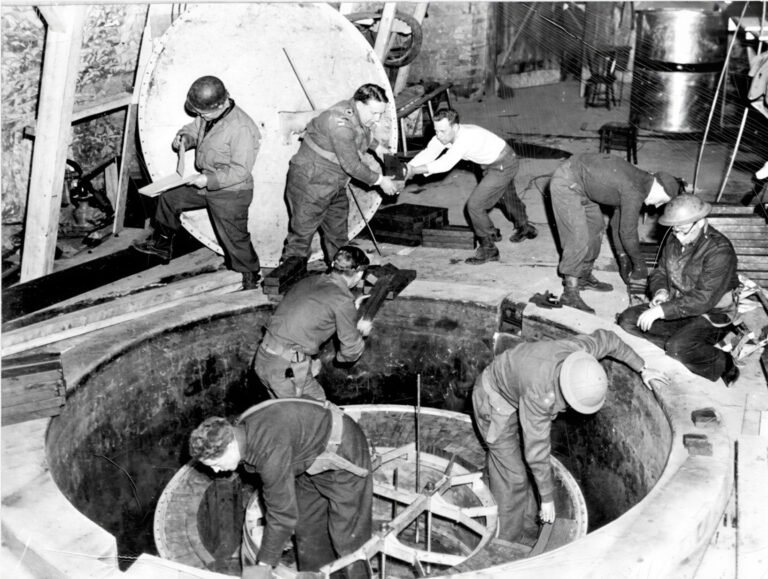
Did The Nazis Develop Nuclear Weapons? – Mythbusting Berlin
The Nazi obsession with super-weapons became so serious in the closing stages of the Second World that Adolf Hitler personally believed that such ‘Wunderwaffen’ both existed in a usable form – and would save the country from defeat. Had the Nazis managed to develop nuclear weapons by 1945 – the outcome of the war would surely have been different. But how close were Hitler, Himmler, and his henchmen to developing an A-bomb?

Did The Nazis Invent Decaf Coffee? – Mythbusting Berlin
Persistent rumors claim that Nazis preferred their coffee anything but pure, leading some to wonder if they might have influenced the development of decaffeinated coffee. Although decaf was already widely available across Europe by the mid-20th century, speculation continues: could the Nazis really have played a role in popularizing—or even discovering—this caffeine-free alternative, or is this simply another caffeinated conspiracy cooked up to sensationalize an ordinary historical detail?

Did The Nazis Invent The Bicycle Reflector? – Mythbusting Berlin
The fruits of wartime ingenuity are plenty – so many, in-fact, that it has become somewhat of a worn cliche that as the guns start firing the innovators get to work, often solving problems while providing more problems for the enemy to overcome.The kind of progress that results in the production of newer improved, more lethal weapons, such as to increase the chances of victory.
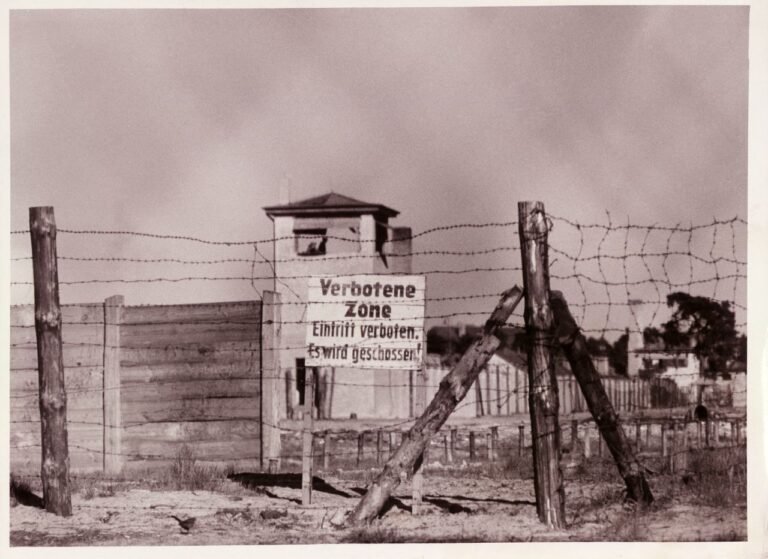
Did The Nazis Run The Largest Counterfeiting Operation In History – Mythbusting Berlin
During the Second World War the Nazis masterminded an astonishing plot to destabilise Britain by flooding its economy with counterfeit banknotes. Crafted in secret by concentration camp prisoners, this forged fortune became the most ambitious counterfeiting operation ever attempted. But was it history’s largest? Dive into the extraordinary tale of Operation Bernhard,
rife with deception, survival, and intrigue—revealing the truth behind one of the Third Reich’s most audacious schemes and its surprising legacy.
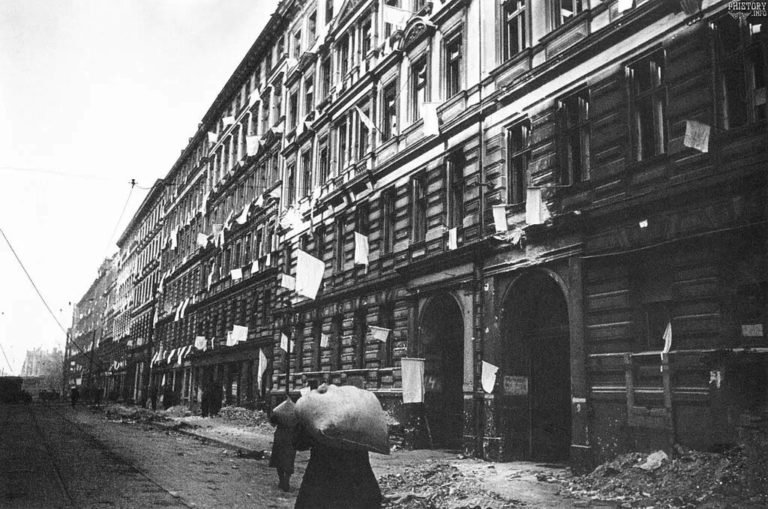
Did The Second World War End In Berlin? – Mythbusting Berlin
When is a war ever truly over? When the last shot is fired in anger would seem like the best measure. Rarely, though, is it possible to gain insight into such a moment.
Remarkably, a record still exists of such a moment at the end of the First World War on the Western Front. A seismic register and recording of the last belching battery of British guns firing artillery across no-man’s-land, followed by a profound
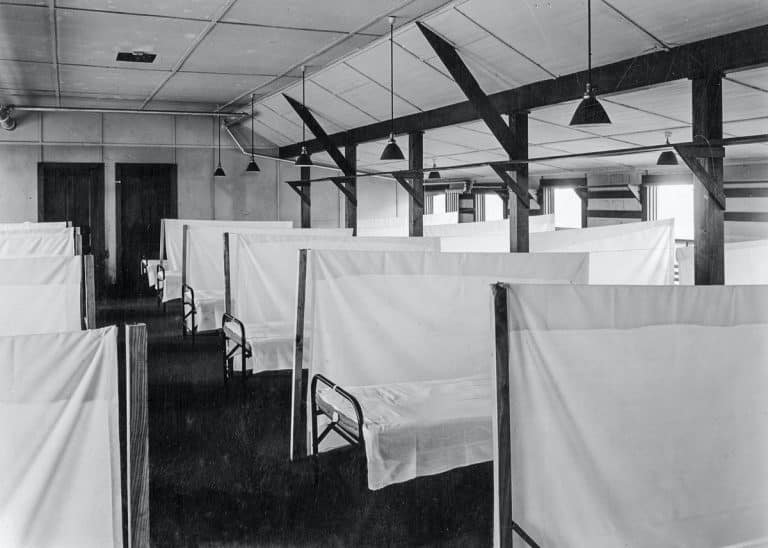
Did The Spanish Flu Pandemic Help The Nazis Take Power? – Mythbusting Berlin
The devastating Spanish Flu pandemic of 1918-1919 struck amid Germany’s post-war turmoil, compounding social instability, economic hardship, and widespread political disillusionment. Could this catastrophic health crisis have indirectly paved the way for Nazi ascension? While often overshadowed by war and revolution, the pandemic’s profound psychological and societal impacts arguably contributed to the perfect storm, enabling extremist ideologies—including Nazism—to gain popularity and ultimately seize power in a fractured Germany.
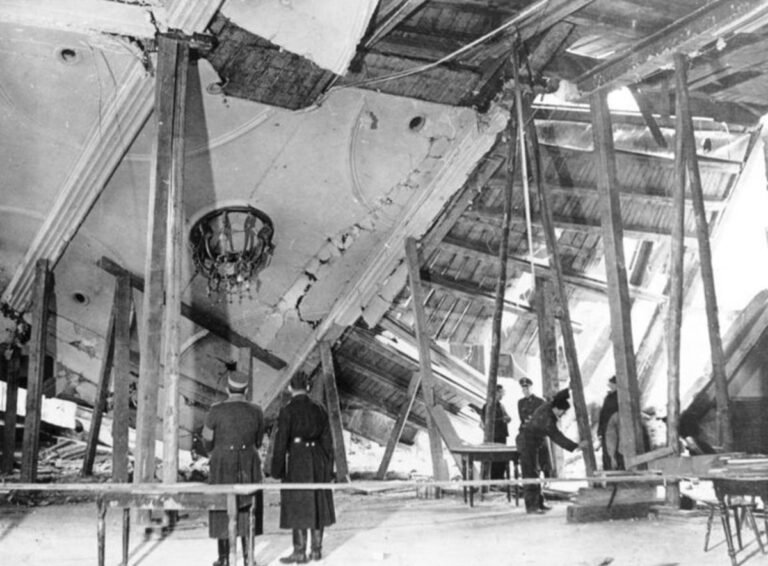
How Many Assassination Attempts On Adolf Hitler Were There? – Mythbusting Berlin
Nazi leader, Adolf Hitler, projected an aura of invincibility, a man of destiny shielded by providence. But behind the carefully constructed image of the untouchable Führer lies a story of constant threat, of bombs that failed to detonate, and errant bullets that missed their mark. Unearth the hidden history of the numerous attempts on Hitler’s life as we explore the courage of those who tried to change the course of history and the devil’s luck
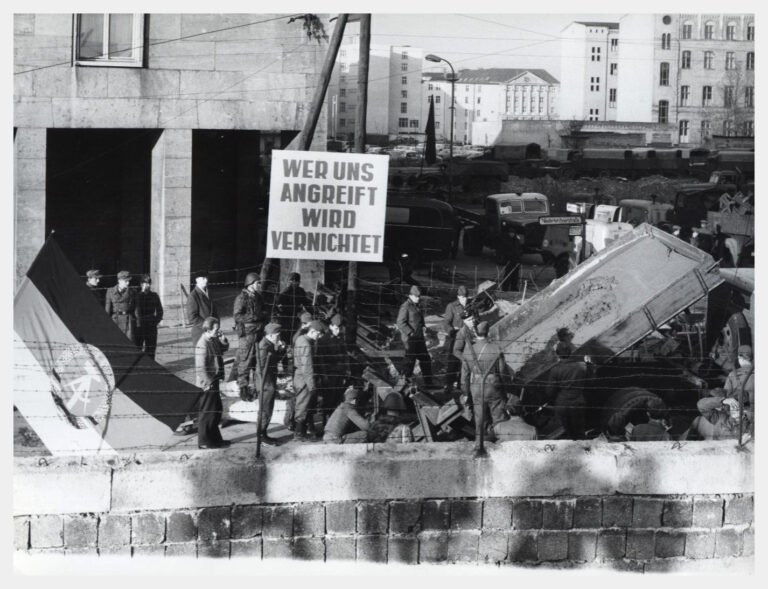
How Many People Died Trying To Escape East Germany? – Mythbusting Berlin
The image of the Berlin Wall is seared into our collective memory, a concrete symbol of Cold War oppression. We think of the daring escapes and the tragic deaths of those who failed. But that well-known number is only a fraction of the truth. The story of those who died trying to escape East Germany is far broader and more complex than most imagine, stretching along a thousand-kilometer border and out into the cold waters
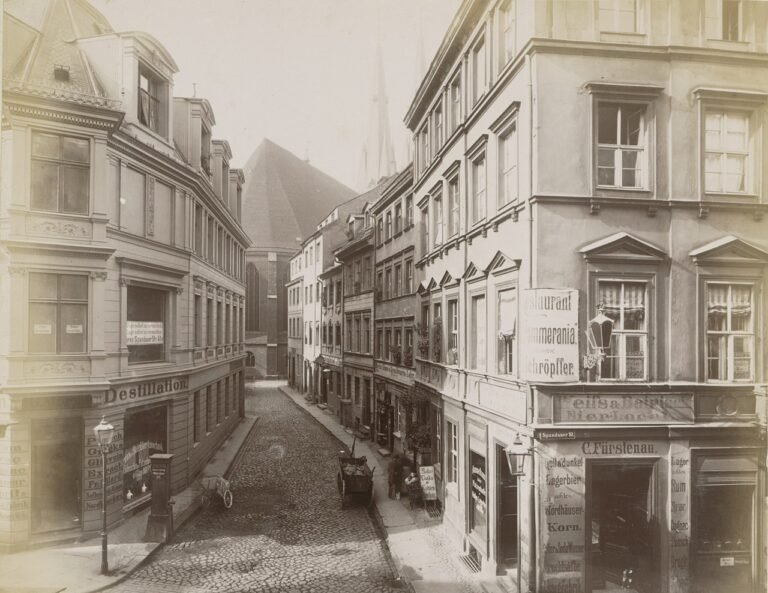
How Old Is Berlin? – Mythbusting Berlin
A relatively new arrival in Europe, Berlin is over 1000 years younger than London, nevermind Rome or Athens, Jerusalem or Jericho. Just how old is Berlin though?
A question fraught with false assumptions and distortions – that has more often than not been answered with propaganda as it has with the cold hard truth.
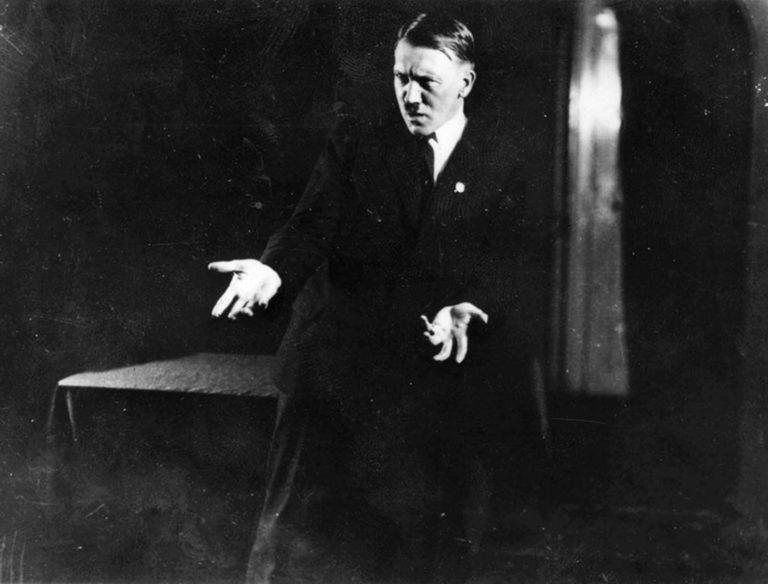
Was Adolf Hitler A Drug Addict? – Mythbusting Berlin
Solving the enigma of the ‘Führer’ has become a preoccupation for many, since the arrival of the Austrian-German onto the world stage – although moving beyond the mythology without falling into the trap of prejudically extrapolating on the psychopathography of Hitler or demonising so as to excuse his actions has proven problematic. What to make of the man who became more than the sum of his masks? The painter; the military dilettante, the mass murderer,
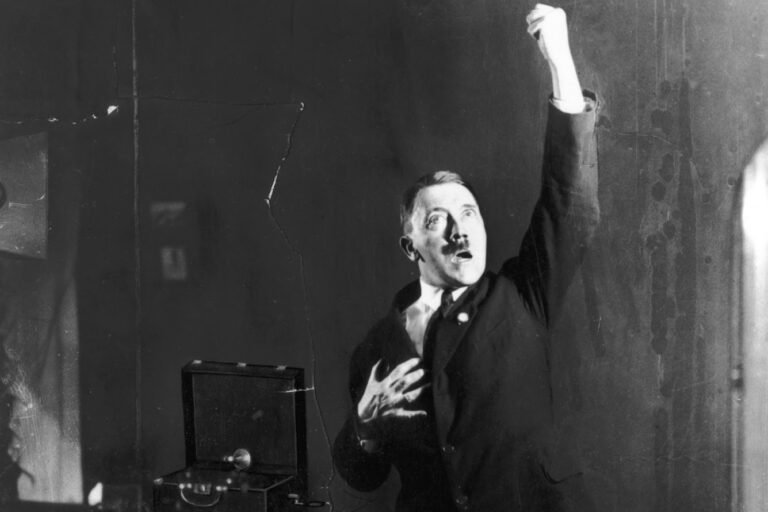
Was Adolf Hitler Gay? – Mythbusting Berlin
In the shadowy corridors of Third Reich history, few questions provoke as much tabloid curiosity and scholarly exasperation as the sexuality of Adolf Hitler. For decades, rumors have swirled—whispered by political enemies in 1930s Munich, psychoanalyzed by American spies in the 1940s, and sensationalized by revisionist authors today. Was the dictator who condemned thousands of men to concentration camps for “deviant” behavior hiding a secret of his own? By peeling back the layers of propaganda,
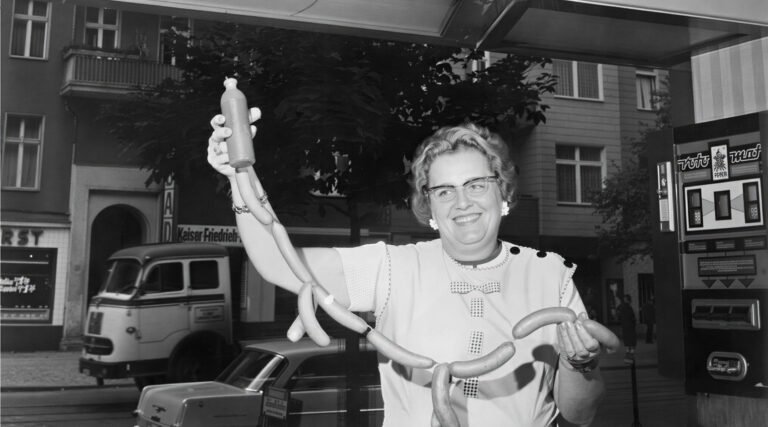
Was Currywurst Invented In Berlin? – Mythbusting Berlin
Explore the story behind what many consider Berlin’s most iconic snack—the ever-so-humble Currywurst. Often hailed as an enduring symbol of culinary creativity amid Cold War scarcity, this humble dish has inspired fierce debate about its true origin. But was it genuinely invented here in Berlin, or have proud locals simply adopted and elevated this spicy street-food favorite into legendary status all their own?
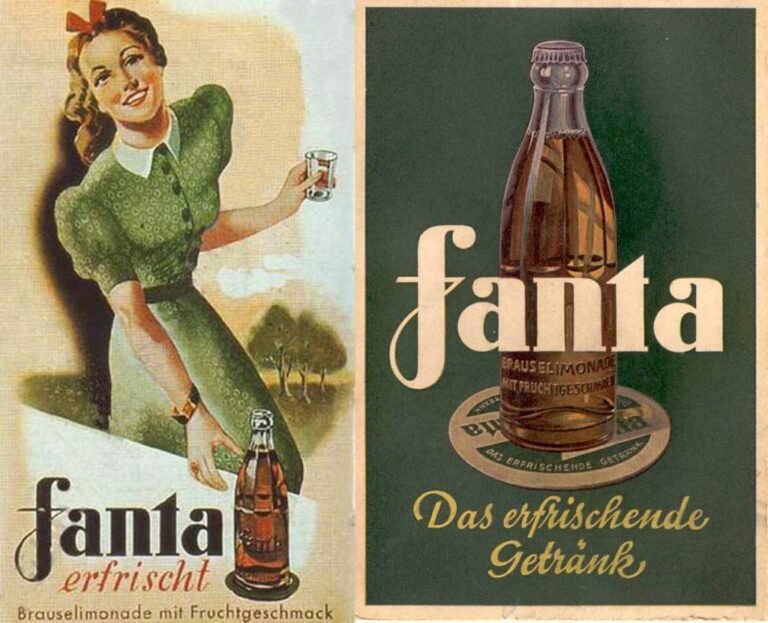
Was Fanta Invented By The Nazis? – Mythbusting Berlin
As one of the most secretive organisations in the world, the Coca Cola corporation refuses to share its secret recipe with anyone. Famously insisting only on shipping the base syrup of its drinks to plants around the world to be carbonated and distributed.
This combined with the trade limitations of the Second World War may have led to the introduction of one of the most popular soft-drinks in the world. But could it be true:
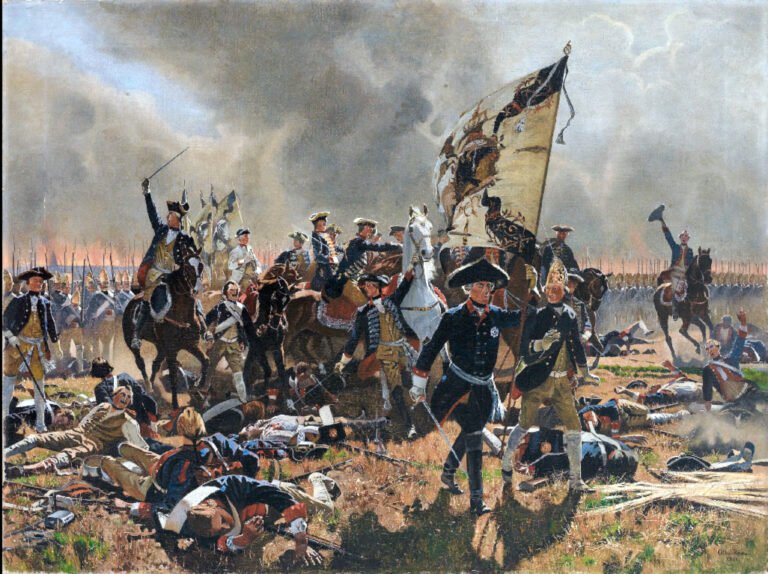
Was Frederick The Great Gay? – Mythbusting Berlin
Frederick II of Prussia, better known as Frederick the Great, is often remembered as the archetypal enlightened monarch – a brilliant military commander, patron of the arts, and learned philosopher. Yet behind the stern portraits of this 18th-century warrior-king lies a personal life long shrouded in intrigue and speculation. Intrigue around the king’s sexual orientation has persisted through the centuries, chiefly revolving around one question: Was Frederick the Great gay?
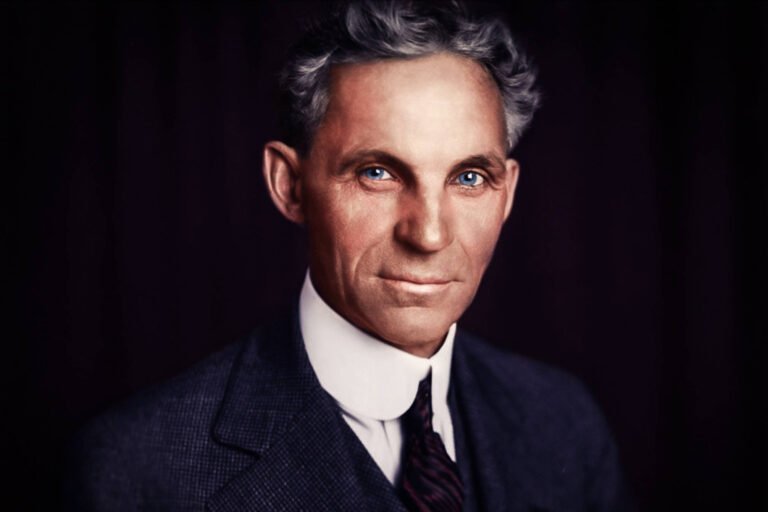
Was Henry Ford A Nazi? – Mythbusting Berlin
US auto tycoon, Henry Ford, holds the ignominious distinction of being the only American Adolf Hitler praised by name in his National Socialist manifesto: ‘Mein Kampf’. This was not, as it turns out, the only connection between Ford and the Party of Hitler, Himmler, and the Holocaust.
Ford’s overt affinity with the Third Reich reveals a troubling past. How deep these connections ran, and how consequential they were for both sides, is a chapter

